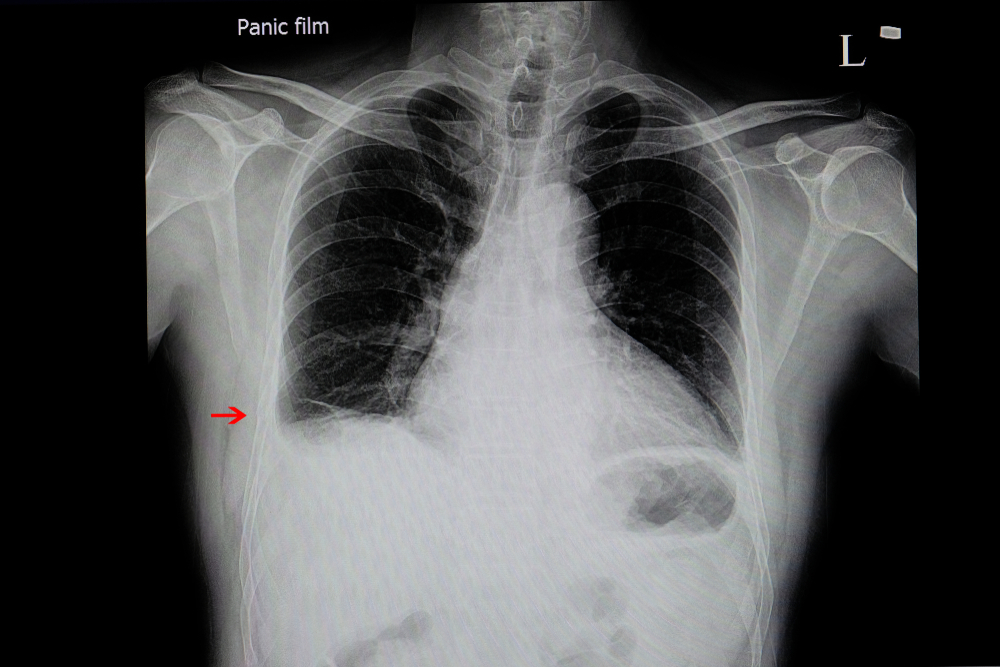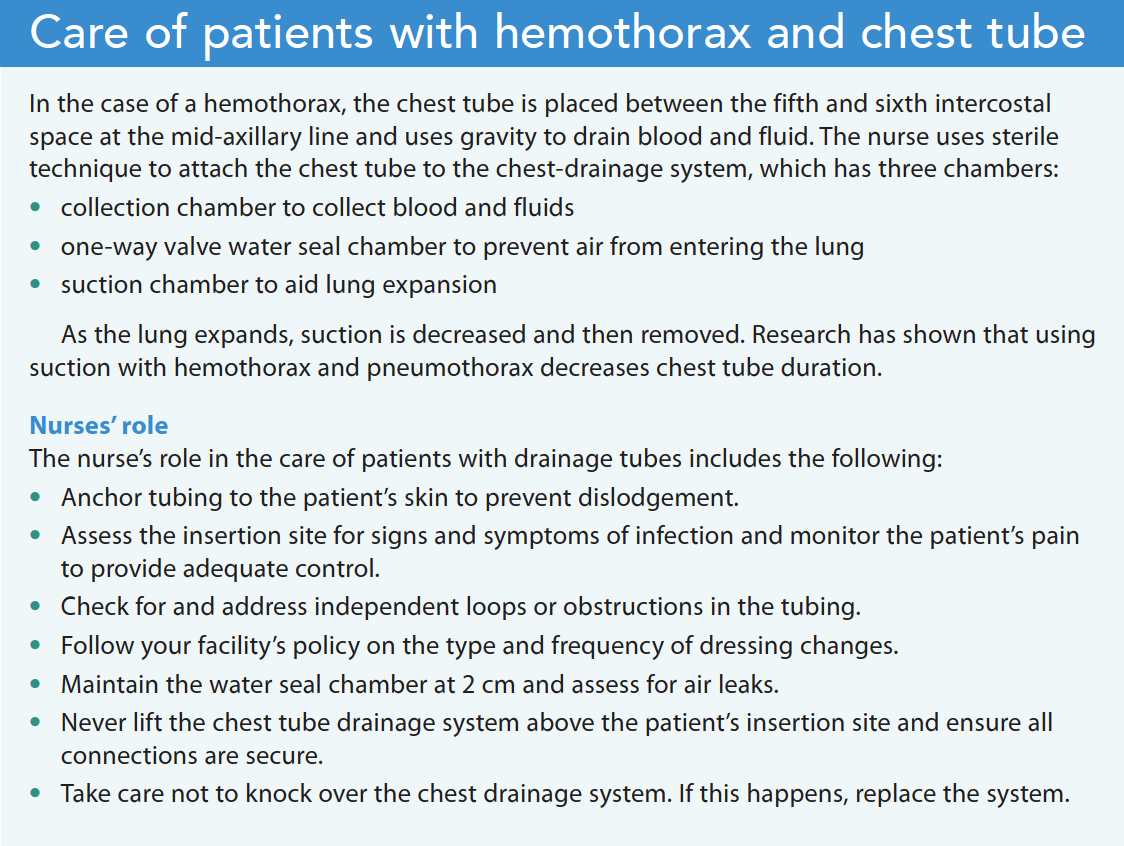Fast action ensures prompt treatment.
- Treatment for respiratory distress follows the ABC acronym (airway, breathing, circulation).
- After acquiring adequate ventilation and oxygenation, focused assessment and sonography (FAST) is performed to quickly diagnose hemothorax.
Joseph Wimer*, a 54-year-old patient with hypothyroidism, hypertension, and atrial fibrillation, is admitted to the progressive care unit with a diagnosis of syncope, fall, and broken ribs. He takes apixaban and metoprolol for atrial fibrillation.
When you respond to Mr. Wimer’s call light, he reports increased shortness of breath and left chest pain. You note that the patient holds his left arm tight against his body and uses accessory muscles when breathing. Your assessment reveals diminished left-sided lung sounds and palpable subcutaneous emphysema. The patient is cold, pale, and diaphoretic. His vital signs are BP 110/52 mmHg with a mean of 71 mmHg, RR 28 breaths per minute, HR 128 beats per minute, and oxygen saturation 88% on nasal cannula 2 L per minute.
You call for the rapid response team (RRT) and explain to Mr. Wimer that you’ve notified his physician and the care team will arrive shortly.
On the scene
To improve oxygenation, you place Mr. Wimer in a high-fowler’s position and titrate oxygen to maintain a saturation of 95%. Mr. Wimer rates his pain as 10/10, so you administer I.V. fentanyl 25 micrograms per his as-needed dose for pain.
The RRT arrives and performs a focused assessment with sonography (FAST), which reveals a large left upper lobe hemothorax. The team orders a stat portable chest x-ray, which confirms the newly developed hemothorax as well as three broken ribs. Mr. Wimer’s physician orders a chest tube, insertion tray, and chest-drainage system as well as hematocrit, hemoglobin, and coagulation studies to assess for internal bleeding. Lab results are unremarkable.
Outcome
Mr. Wimer requires surgical stabilization of his rib fractures. The physician places the patient’s apixaban prescription on hold and orders an I.V. infusion of andexanet alfa, an anticoagulation reversal agent for rivaroxaban or apixaban. Four days later, the chest tube is removed and apixaban restarted. After a 7-day hospitalization, Mr. Wimer is discharged home with home health and physical therapy. (See Care of patients with hemothorax and chest tube)
Education
Treatment for respiratory distress follows the ABC acronym (airway, breathing, circulation). Responders must first ensure adequate ventilation and oxygenation and then perform FAST, a point-of-care investigative tool for managing trauma patients. In Mr. Wimer’s case, FAST provided a quick hemothorax diagnosis and the chest x-ray served as an additional diagnostic tool.
*Names are fictitious.
Tara M. Chitwood is an assistant professor at Radford University School of Nursing in Radford, Virginia.
American Nurse Journal. 2023; 18(2). Doi: 10.51256/ANJ022350;
Key words: hemothorax, shortness of breath, focused assessment and sonography, chest tube
References
Choi J, Villarreal J, Andersen W, et al. Scoping review of traumatic hemothorax: Evidence and knowledge gaps, from diagnosis to chest tube removal. Surgery. 2021;170(4):1260-7 doi:10.1016/j.surg.2021.03.030
Hoffman JJ, Sullivan NJ. Davis Advantage for Medical-Surgical Nursing: Making Connections to Practice. 2nd ed. Philadelphia, PA: FA Davis Company; 2019.
John Hopkins Medicine. Anticoagulation reversal guidelines. hopkinsmedicine.org/suburban_hospital/for_physicians/_docs/anticoagulation_reversal_guide.pdf
Lynn PB. Taylor’s Clinical Nursing Skills: A Nursing Process Approach. 5th ed. Philadelphia, PA: Lippincott Williams & Wilkins; 2018
UpToDate. Direct oral anticoagulant reversal agents for life-threatening bleeding (imminent risk of death from bleeding). 2022. uptodate.com/contents/image/print?imageKey=HEME%2F112299&topicKey=HEME%2F1312&source=see_link
Zanobetti M, Coppa A, Nazerian P, et al. Chest abdominal-focused assessment sonography for trauma during the primary survey in the emergency department: The CA-FAST protocol. Eur J Trauma Emerg Surg. 2018;44(6):805-10. doi:10.1007/s00068-015-0620-y



















